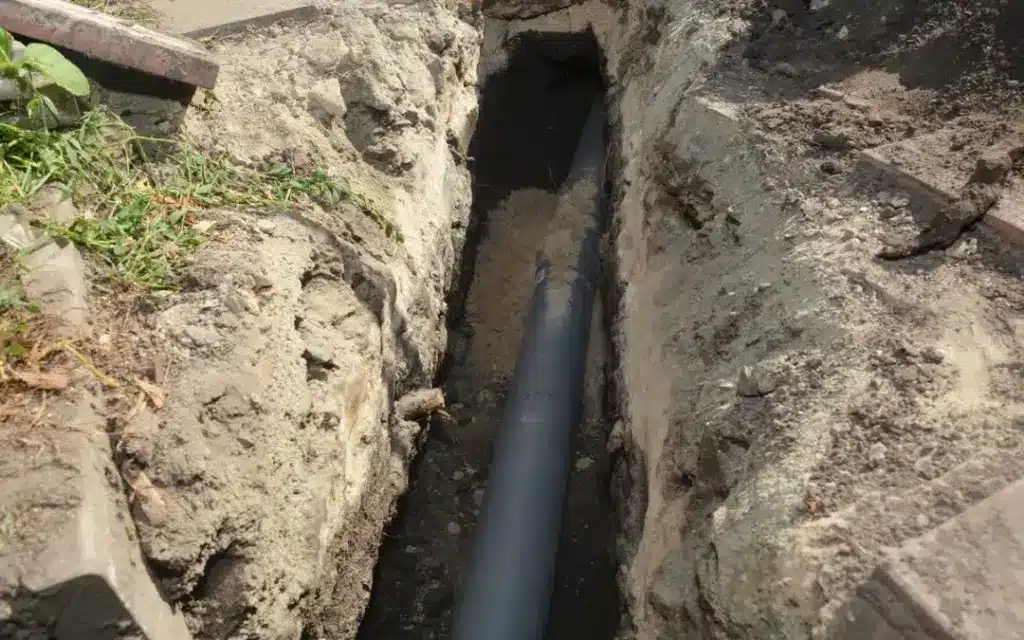Sewer line issues rarely appear suddenly. Most problems begin quietly, revealing themselves through subtle changes around the home that many homeowners overlook until a major failure occurs. Detecting those clues early protects not only your property but also the health and safety of everyone living there.
Because symptoms often mimic minor drain problems, it’s easy to dismiss them as everyday inconveniences. However, early action can prevent damage that becomes significantly more expensive to resolve if ignored. Homeowners who want added peace of mind often turn to trusted experts, such as top-rated drain cleaning services in Medina, when evaluating unusual plumbing behavior before it escalates. Professional insight makes an enormous difference when diagnosing issues beneath the surface.
Thoughtful maintenance and quick responses help avoid emergencies, but understanding the warning signs remains the first step.
Why Sewer Line Failures Start Quietly
Buried sewer lines sit far from daily view, which is why problems develop for months before homeowners recognize anything is wrong. Soil movement, aging materials, growing tree roots, and temperature shifts all affect the integrity of underground pipes. When cracks form or segments collapse, wastewater struggles to move through the system efficiently.
Pressure inside the line eventually rises, forcing water into areas where it shouldn’t be. Early clues often appear indoors through unusual sounds, odors, or drainage behavior long before any visible flooding occurs outdoors.
Identifying these changes early allows homeowners to reduce repair costs and protect their property’s long-term value.
Subtle Indicators of a Developing Sewer Line Collapse
Many early signs resemble ordinary plumbing issues, which makes them easy to overlook. Paying attention to these warning signals can prevent a complete system failure:
- Multiple slow drains throughout the home, especially on lower floors
- Gurgling noises from toilets or sinks when water flows elsewhere
- Sewage odors drifting from bathroom or kitchen drains
- Water-backed basement floor drains, even during dry weather
- Toilet bubbles when sinks or tubs release water
- Unexplained wet spots in the yard above buried lines
Each of these symptoms points to an obstruction or structural issue within the main line rather than an isolated household clog.
Indoor Clues You Shouldn’t Ignore
Some indicators appear inside long before outdoor conditions reveal a problem. Changes in fixture behavior provide valuable insight. For example, toilets that repeatedly lose water in the bowl or produce air pockets after every flush often signal deeper issues. Showers that drain slowly even after cleaning hair traps also suggest restricted flow deeper in the system.
Odors are particularly important. A persistent sewage smell in a bathroom or laundry area often means gases are escaping through compromised pipe segments. While ventilation problems can create similar odors, persistent smells strongly suggest the need for a professional inspection.
Outdoor Warning Signs Around the Property
Exterior clues often confirm what indoor behavior suggested. When a sewer line collapses, wastewater escapes into surrounding soil. That moisture encourages rapid grass growth or creates soft patches underfoot. Sudden dips in the lawn may also appear as soil erodes below the surface.
In extreme cases, wastewater can reach the surface, forming small puddles with a musty or foul smell. These signs indicate damage requiring immediate attention, as continued leakage can threaten foundations, retaining walls, and landscaping features.
When Professional Evaluation Becomes Essential
DIY troubleshooting helps with small household clogs, but deeper system failures require qualified expertise. Sewer line collapses cannot be repaired with plungers, augers, or chemical cleaners. Specialized camera inspections provide clear images of cracks, blockages, or sunken segments that disrupt flow.
Teams trained in trenchless repair methods can often resolve these issues with minimal disruption to landscaping, patios, or driveways. That precision becomes especially important for homes built with premium outdoor materials or custom hardscaping.
Choosing the Right Professionals for the Job
Not all plumbing companies have experience handling sewer line failures, especially in properties built with complex configurations or long pipe runs. Homeowners looking for reliable solutions often select companies with strong reputations, advanced diagnostic tools, and a focus on non-invasive repair methods.
Plumbing specialists such as Ben’s Plumbing bring expertise that benefits properties of any size. Their team uses high-resolution inspection equipment, safe clearing techniques, and modern repair solutions that minimize disruption. For homeowners concerned about long-term system health, choosing an experienced provider ensures the issue is identified accurately and corrected efficiently.
Preventive Practices That Reduce Collapse Risks
While some failures result from aging materials or environmental factors, regular maintenance reduces the likelihood of sudden collapse. Cleaning drains yearly, inspecting the main line for root intrusion, and avoiding disposal of grease or wipes into household drains all help limit buildup.
These steps protect system integrity:
- Maintain trees by trimming roots near underground plumbing paths
- Flush lines periodically with hot water and mild detergent
- Install drain strainers in kitchens and bathrooms
- Avoid planting large trees directly above buried sewer pathways
- Schedule professional inspections every one to two years
Preventive care supports long-term reliability and eliminates many of the conditions that lead to structural pipe failure.
Professional help provides reassurance when symptoms point to deeper problems. With reputable specialists available in the region, homeowners can maintain confidence knowing their sewer system is protected by experts capable of resolving issues efficiently and respectfully.

